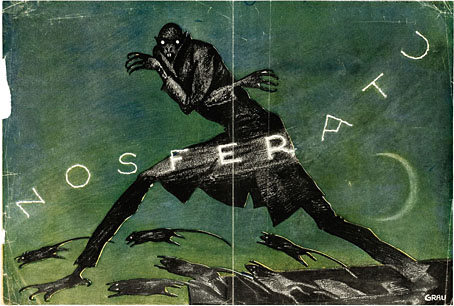
For many directors a film like Nosferatu: A Symphony of Horror (1922) would have been a career peak, but Friedrich Murnau went on to make The Last Laugh (1924), Faust (1926) and Sunrise (1927). All those films improve cinematically on Nosferatu but the vampire film continues to cast the longest shadow: quoted, remade, and with even its production fictionalised in Shadow of the Vampire (2000). The lasting success of Nosferatu wasn’t all Murnau’s doing, however.
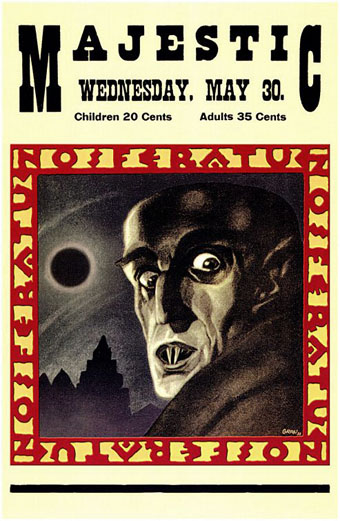
It’s arguable that without the preliminary work of production designer Albin Grau (1884–1971) the film might have been little more than a curious precursor of the Universal Dracula (1931). Grau was responsible for the set design and the extraordinary appearance of Max Schreck’s Count Orlok; Grau also created the film’s memorable poster and advertising imagery in which the vampire’s appearance hints at something even more terrible than the figure that stalks before the camera.
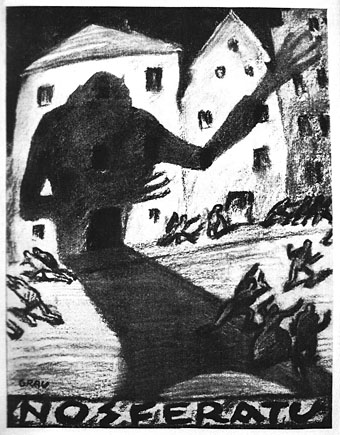
A great deal of German silent cinema is labelled “Expressionist” even if the films themselves show little in the way of overt Expressionism. Nosferatu isn’t very Expressionist at all but Albin Grau’s sketches and posters certainly tend in that direction, so much so that they make me wonder how different the film might have been if it had been as stylised as The Cabinet of Dr. Caligari (1919). In addition to his artistic pursuits, Grau was an occultist which explains the attention to detail in the bizarre contract drawn up between Knock and Count Orlok, a document that looks more like a page from a grimoire than anything used by an estate agent. There’s a quote from Grau in his occult capacity in John Symonds’ Aleister Crowley biography, The Great Beast, complaining in 1925 about Crowley’s ascension to the heights of the Ordo Templi Orientis.
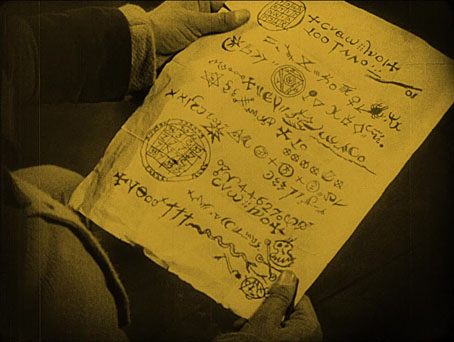
Nosferatu: The Knock-Orlok contract.
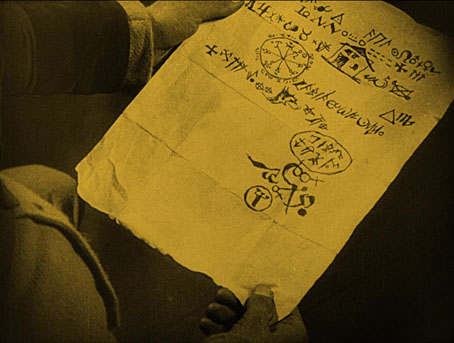
Nosferatu comes out of the occult preoccupations, having been Grau’s project from the beginning when he formed a film company, Prana-Film, with Enrico Dieckmann. The pair announced plans for three films: Dreams of Hell, The Devil of the Swamp, and a drama about a vampire. Only Nosferatu materialised then sank the company almost as soon as it was finished: Prana-Film had spent more on publicity than on the film itself, and went deep into debt. The success of the film might have helped their finances but the death blow was struck by Florence Stoker and the British Society of Authors who won a court case against the company for filming Dracula without permission. The efforts of the Stoker estate to destroy Nosferatu are recounted in detail in David J. Skal’s fascinating Hollywood Gothic (1990). Many of Murnau’s minor films were lost through various misfortunes, and it’s a fluke that a handful of prints of Nosferatu survived. Happily for us, it’s not only vampires that manage to remain undead.
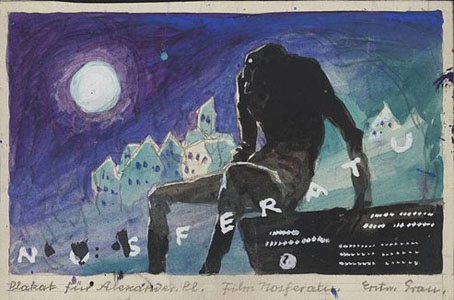
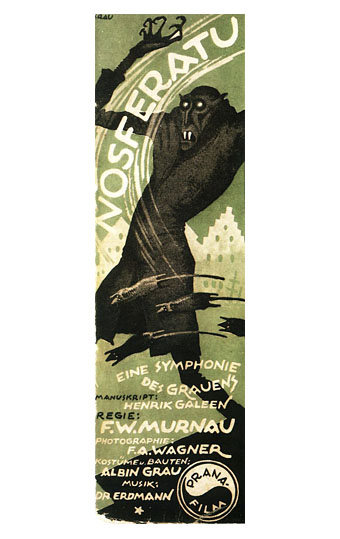
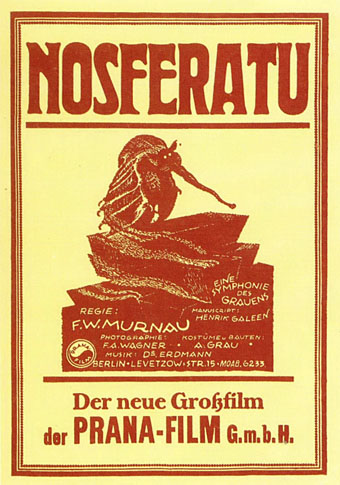
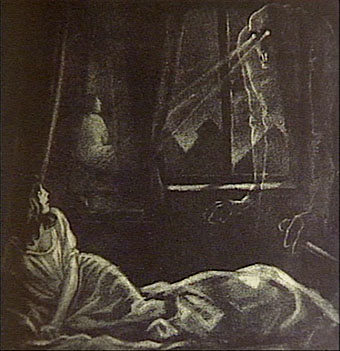
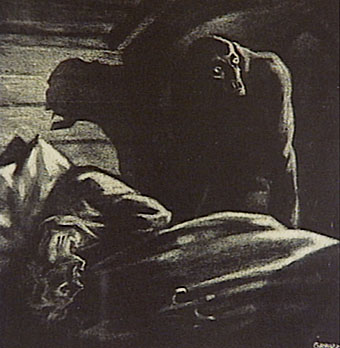
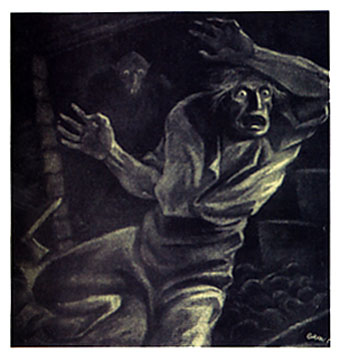
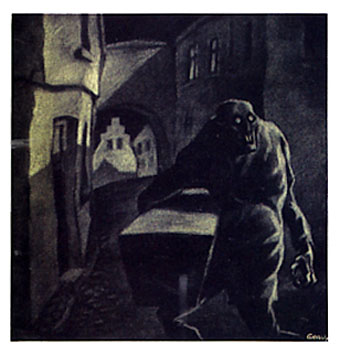
Previously on { feuilleton }
• Count Dracula
• Symbolist cinema

d a film company, Prana-Film
The name hints at an influence from Buddhist philosophy, or at least from the version of Buddhism that had been filtered through theosophy and Gustav Meyrink and Rudolf Steiner to become one pole of 1920s German occultism.
I am disappointed that Orlok’s contract is not entirely in Enochian.
That is indeed the origin of the company name, something that allows Skal to joke about them breathing their last. The company logo is a yin-yang design.
I wonder if Bremen would ever have acquired the Böttcherstraße without Nosferatu’s cinematography linking it with Expressionism.
I suppose when they use the term Expressionist, as in the case of the film “Nosferatu” it refers to the under lighting and exaggerated shadows. As you mentioned “the cabinet of Dr. Caligari” is a true expressionist film with the painted sets and the stylized acting. I assume these kind of lighting effects belong in the catch all term film noir.
However, I would be pressed to name many German Expressionist paintings that have dark foreboding themes. Most seem full of turn of the century exuberance, bright color and joy. This spirit was strangled in World War One which left the members of the movement broken or dead. Of course Edvard Munch is the person given to the gloom and despair that most folks associate with Expressionism.
I agree with you assessment of the Dracula films but I still am fond of Coppola’s” Dracula.” Although it is a mess, the first 1/3 of the film with its wonderful “Secessionists” sets and disembodied shadows make it worth watching. I even like Gary Oldman’s chameleon like transformations. Of course spoiled by the miss-cast Keanu Reaves. I read that the casting was dictated by promises and favors he owed some of the actors which I am sure he came to regret.
When they made the recent short lived TV “Dracula” the opening scene where Dracula’s desiccated caged corpse is is revived by a few drops of blood was riveting. It’s too bad it did not pull in more views as the acting and production design were top notch.
Just to mention one more film. Frank Langella’s sexy Dracula was interesting. There is a scene where he crawls down the side of the building were Mina is sleeping. You see his hand picking the lead out of a pane of glass as he hangs upside down looking at her thru the window. It was a terrific and scary scene.
There’s other films besides Caligari with twisted sets although you seldom hear them mentioned today: Waxworks (1924) by Paul Leni for one. In Lotte Eisner’s definition “Expressionist” also applies to things like the massing of crowds in The Golem and Metropolis as well as shadows and angled architecture. The vampire in Nosferatu is in many ways an Expressionist character because of the extreme distortions of his body; the film as a whole is more naturalistic, however. I recommend reading Eisner’s The Haunted Screen for more detail on the subject.
I enthused about Coppola’s film a few years ago:
http://www.johncoulthart.com/feuilleton/2011/02/08/symbolist-cinema/
Langella was a great Dracula but I was less impressed with the film as a whole. A long time since I’ve seen that one, I ought to watch it again.